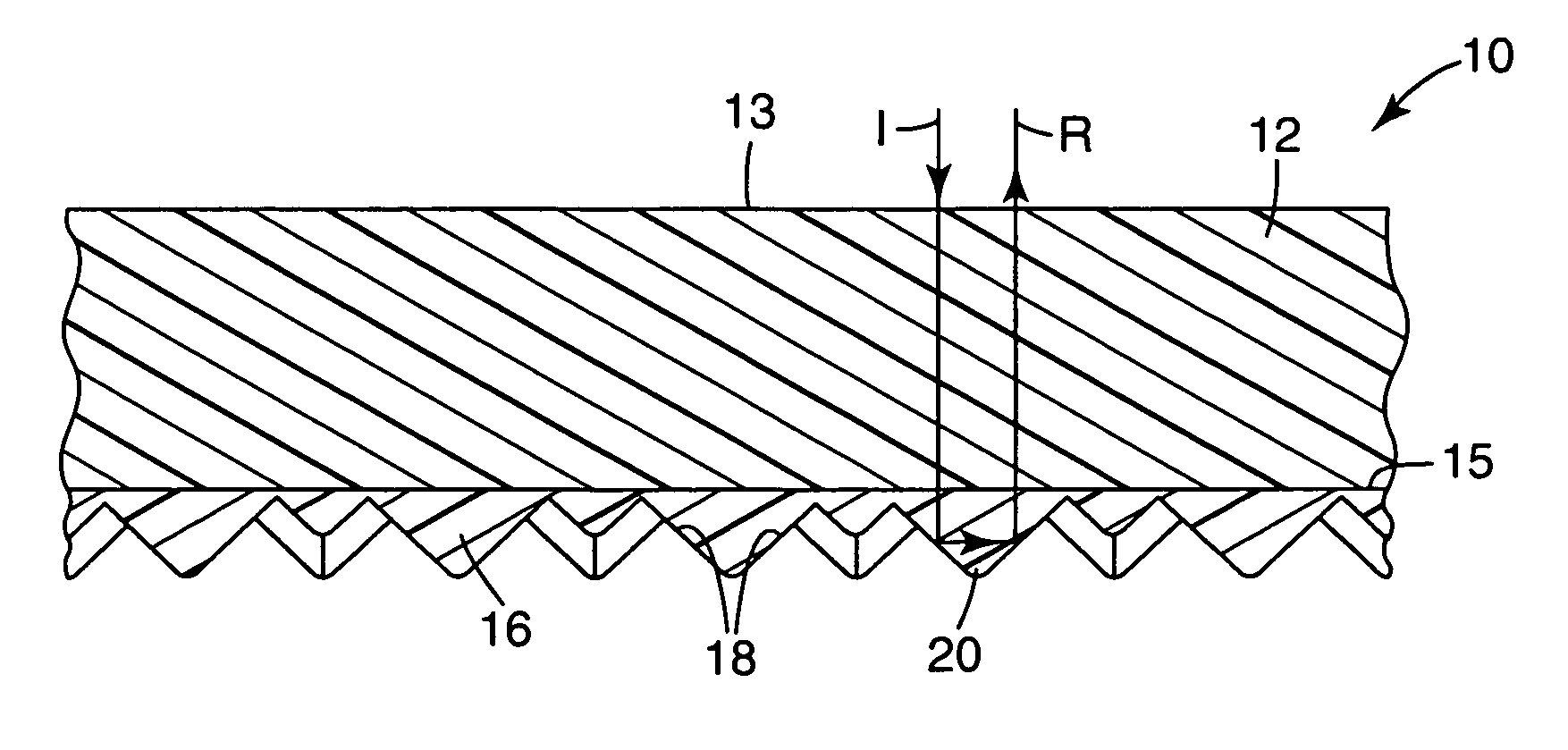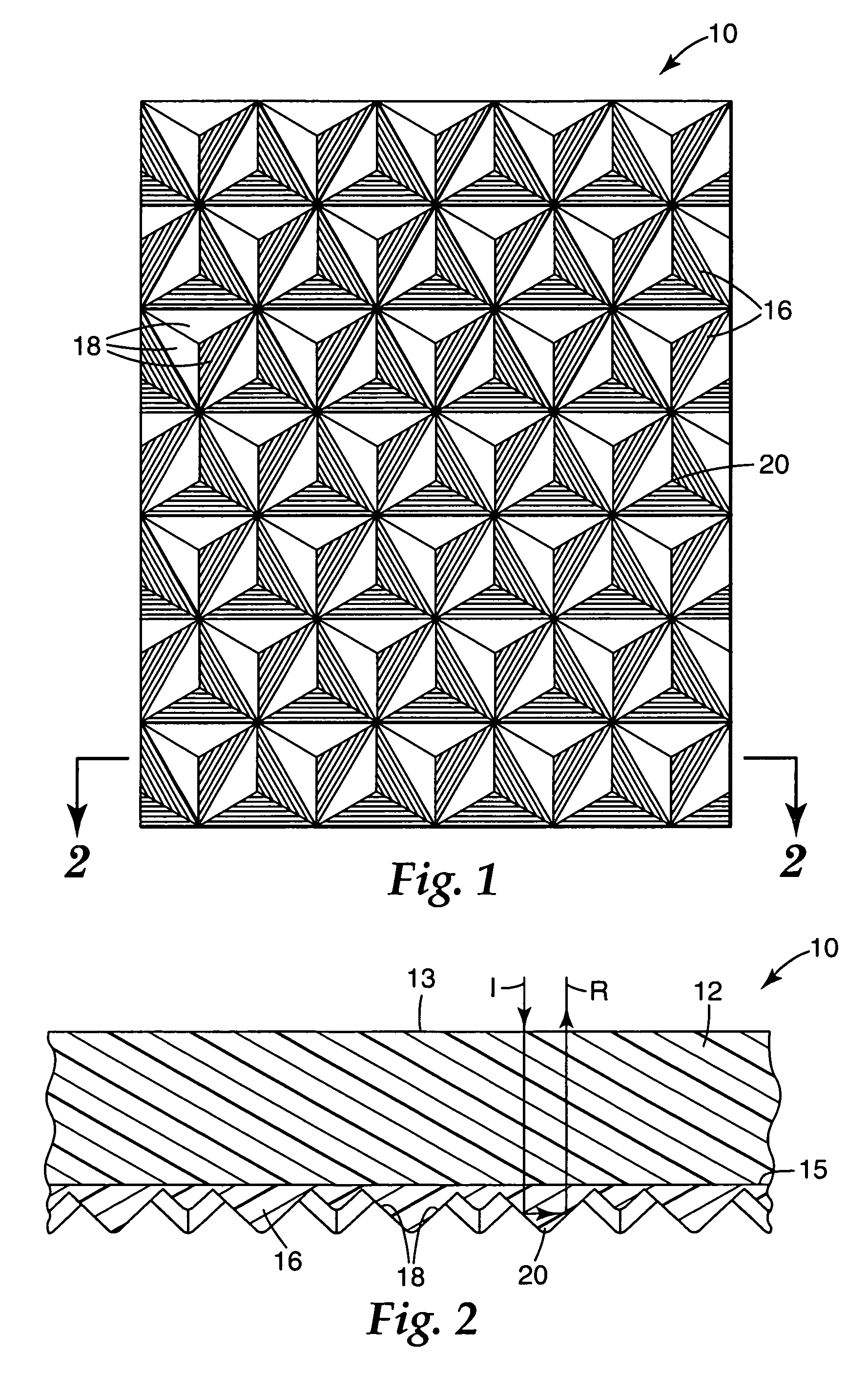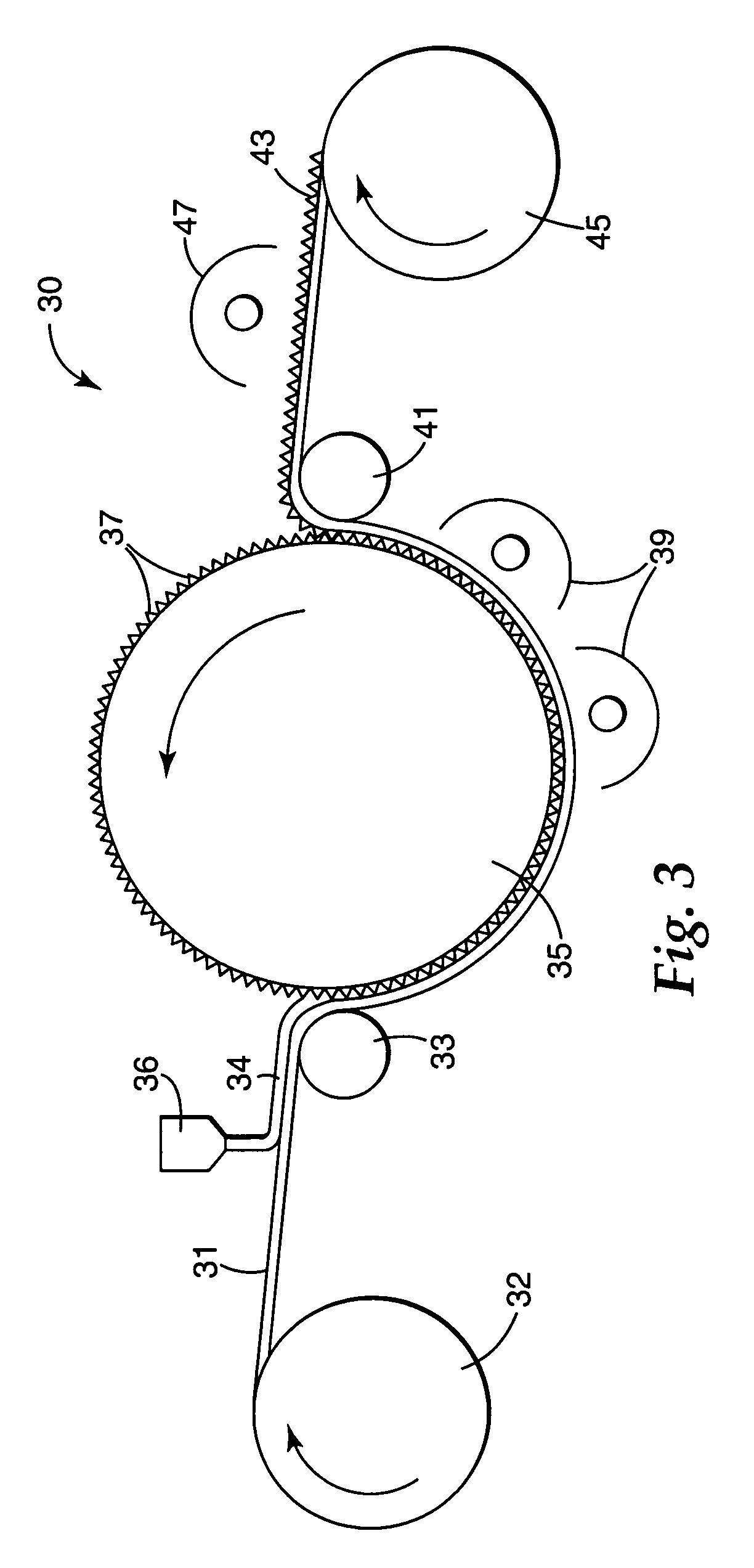Prismatic retroreflective article with fluorine- or silicon-containing prisms
a technology of prisms and prisms, applied in the field of prism retroreflective articles, can solve the problems of reducing the number of cube-corner elements available for retroreflection, increasing and retroreflective articles can lose most or all of their retroreflection, so as to maintain the retroreflection effect, reduce the number of cube-corner elements, and increase the weight, cost and stiffness of articles
- Summary
- Abstract
- Description
- Claims
- Application Information
AI Technical Summary
Benefits of technology
Problems solved by technology
Method used
Image
Examples
example 1
[0032]A control cube resin was formed from 24.75 parts EBECRYL™ 3700 bisphenol A epoxy diacrylate (UCB Chemicals, Inc.), 49.5 parts trimethylolpropane triacrylate, 24.75 parts hexanediol diacrylate and 1 part DAROCURE™ 4265 photoinitiator (Ciba Specialty Chemicals, Inc.). A modified cube resin was prepared by adding 3 parts of BYK™ UV3510 polyether-modified polydimethyl siloxane (Byk-Chemie USA, Inc.) to 97 parts of the control cube resin. A 0.25 mm thick plasticized clear polyvinyl chloride body layer film (No. KGC193 from Achilles USA, Inc.) having a 3.5 hand value and an elastic modulus less than about 108 pascals was mounted in an apparatus like that shown in FIG. 3. The control and modified cube resins were UV-cured against the body layer film to form unsealed retroreflective sheeting having 0.9 mm high open air-exposed cube-corner optical elements. The cube side of the control sheeting was exposed to water, which wet out the cube-corner optical element rear surfaces and signif...
example 2
[0033]Using the method of Example 1, a modified cube resin was prepared by adding 3 parts of the copolymerizable material BYK™ UV3500 polyether-modified polydimethyl siloxane acrylate (Byk-Chemie USA, Inc.) to 97 parts of the control cube resin. The modified cube resin was UV-cured against the body layer film to form unsealed retroreflective sheeting having 0.9 mm high open air-exposed cube-corner optical elements. When the modified cube resin sheeting was exposed to water, it did not wet out the cube-corner optical elements. Instead the applied water beaded up, minimizing the area in contact with the liquid and largely preserving retroreflectivity. These tests were repeated using mineral oil, kerosene, mineral spirits and isopropanol, all of which were found to wet out the modified sheeting.
example 3
[0034]Using the method of Example 1, four modified cube resins were prepared by adding 10 parts or 25 parts of the copolymerizable materials methylperfluorobutylsulfonamido ethyl acrylate or methylperfluorobutylsulfonamido ethyl methacrylate to 90 parts or 75 parts of the control cube resin. The modified cube resins were UV-cured against the body layer film to form four unsealed retroreflective sheetings having 0.9 mm high open air-exposed cube-corner optical elements. Water did not wet out the cube-corner optical elements. Instead the applied water beaded up, minimizing the area in contact with the liquid and largely preserving retroreflectivity. These tests were repeated using mineral oil, kerosene, mineral spirits and isopropanol, all of which were found to wet out the modified sheetings.
[0035]The control and modified sheetings were each stitched to a lightweight polyester knit fabric used in safety vests, then subjected to a water shower test and measured for retroreflectivity a...
PUM
 Login to View More
Login to View More Abstract
Description
Claims
Application Information
 Login to View More
Login to View More - R&D
- Intellectual Property
- Life Sciences
- Materials
- Tech Scout
- Unparalleled Data Quality
- Higher Quality Content
- 60% Fewer Hallucinations
Browse by: Latest US Patents, China's latest patents, Technical Efficacy Thesaurus, Application Domain, Technology Topic, Popular Technical Reports.
© 2025 PatSnap. All rights reserved.Legal|Privacy policy|Modern Slavery Act Transparency Statement|Sitemap|About US| Contact US: help@patsnap.com



